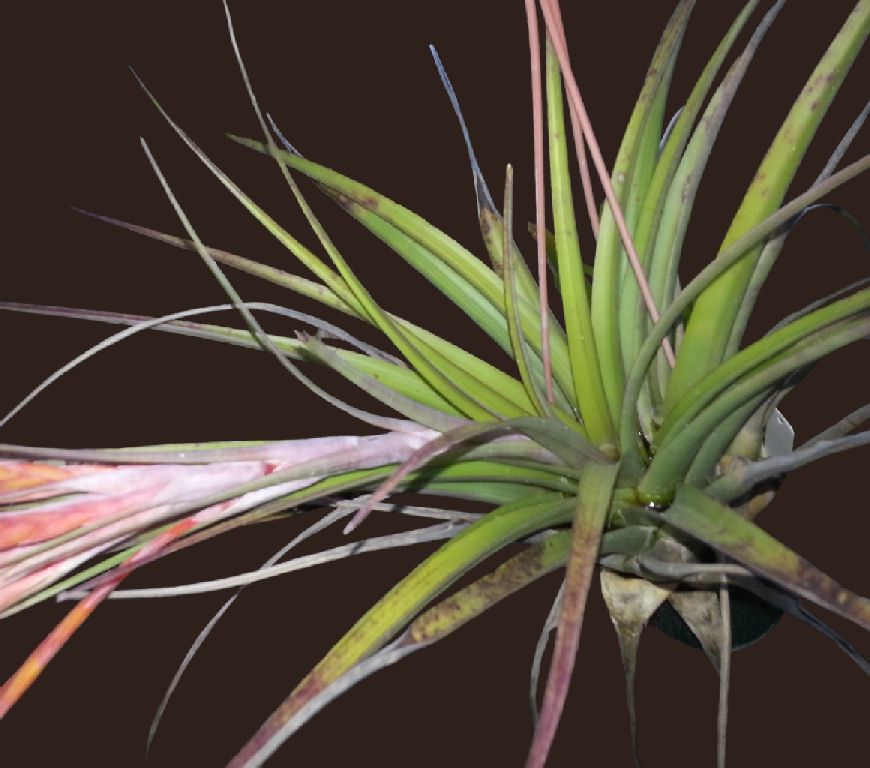


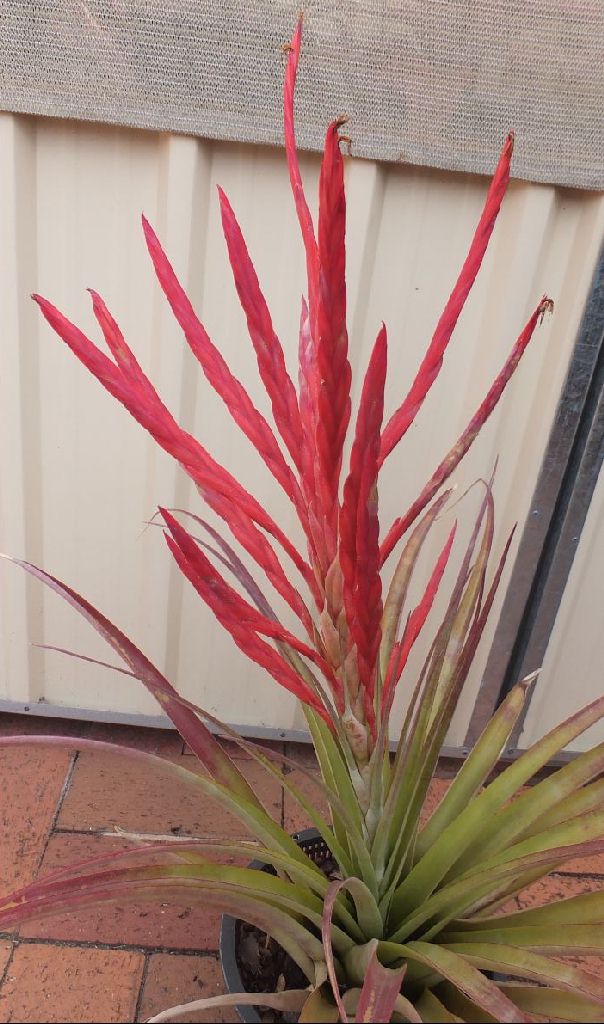
Len Cologan .... "I am pleased that the plant has matched our expectations.
Its name is Tillandsia x bergiana, named in honour of the late Wally Berg (nothing to do with Berger or bergeri). It is a natural hybrid of T. beutelspacheri X flabellata which somewhat explains why it is such a great plant, looking at that parentage. It was discovered growing on the cliffs in Sumidero Canyon, Mexico, where each of the nominated parents also grows.
It was described by our own Pamela Koide and Hiroyuki Takizawa in honour of the late, great Wally Berg. I guess it is rare that a non-species bromeliad is named in some prominent person's honour, but I reckon this is warranted!"
Grant Paterson .... "Derek, the link with Heather Sullivan and 'Naundorff', upon double checking with a higher authority (Mum), and my database, is that the original plant she obtained came from Heather but was from a batch of seed raised by Olwen Ferris ex Elizabeth Naundorff.
Hence the grex and some minor variation so there must be more around, many more as it pups very well.
I have literally sold or swapped dozens of these plants with ‘Naundorff” or NR45 label so those that have these please amend labels to correct CV name."
Len Cologan .... "... actually, the more I think about it, doesn't the name "bergiana" imply that it was named after Wally Berg and his wife Dorothy as well. I think the Latin ending ...iana implies a husband and wife, as in ehlersiana, fosteriana, hromadnikiana, etc. If it was just Wally, I think it would have been "bergii" which, by the way, has nothing to do with "bergeri" of course. Out of accuracy, can an authority (Pam?) confirm this?"
Derek Butcher .... "Len: Nope. The protologue says Wally. If it were both the pedant would say 'bergorum'. Interesting that ehleriana is not known as ehlersorum! That is, if you follow Stearn."
Len Cologan .... "Derek: I am pretty sure you are wrong in this regard.
Firstly, you cannot have a tillandsia with a name ending in ...iorum, as this contradicts the Latin. You could have a nidularium, etc, ending in ...iorum, but not a tillandsia.
Secondly, T. ehlersiana is definitely named after Klaus and Renate Ehlers. T. hromadnikiana is definitely named after Helmut and Lotte Hromadnik. Lydia and Gerhad Koehres told me that T. koehresiana was named after them both as they jointly discovered it, according to the description.
Because of those precedents, I asked the question whether T. X bergiana was, in fact, named after Wally and Dorothy, despite what the description says. Surely, if it was named after Wally alone, it would be T. bergii.
I do not believe there is, or could ever be, any tillandsia ending in ...iorum.
I guess Pam can explain why that name was chosen."
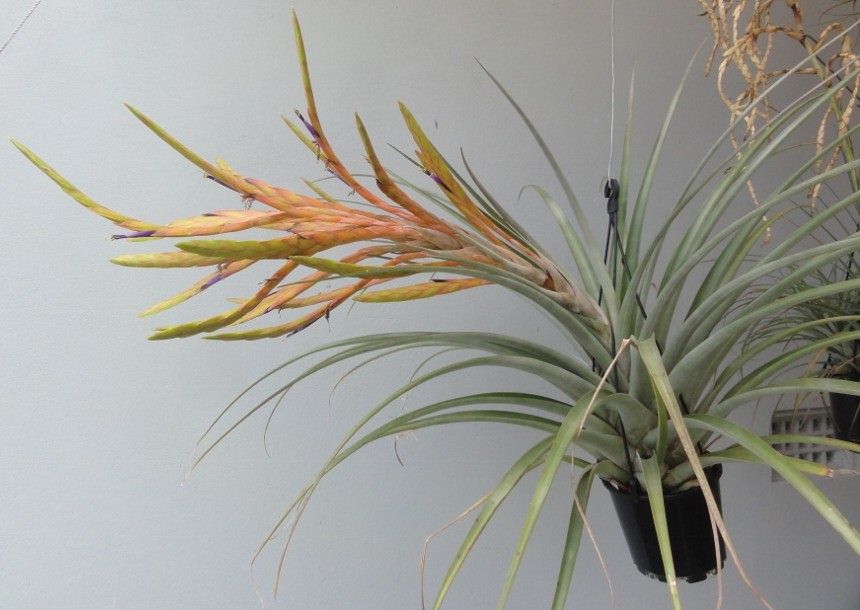
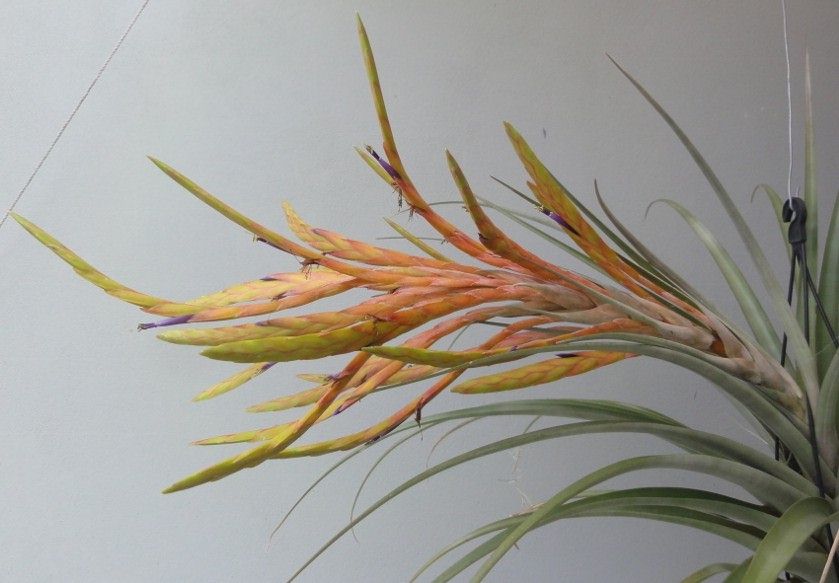
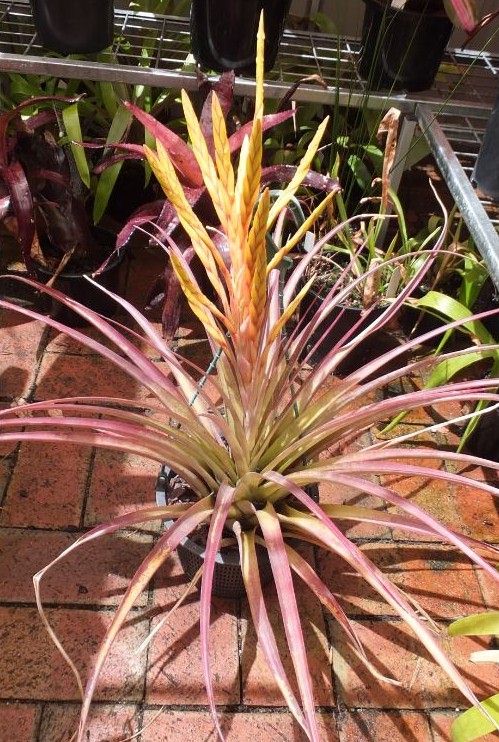

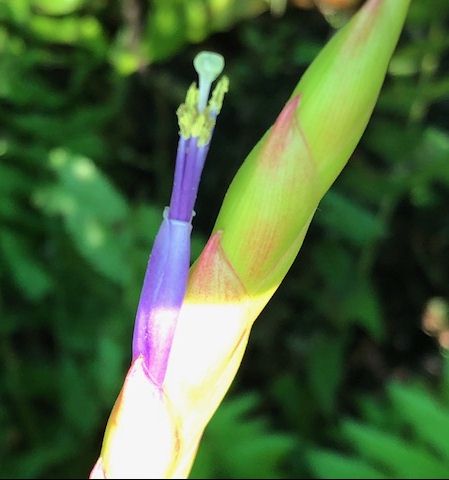
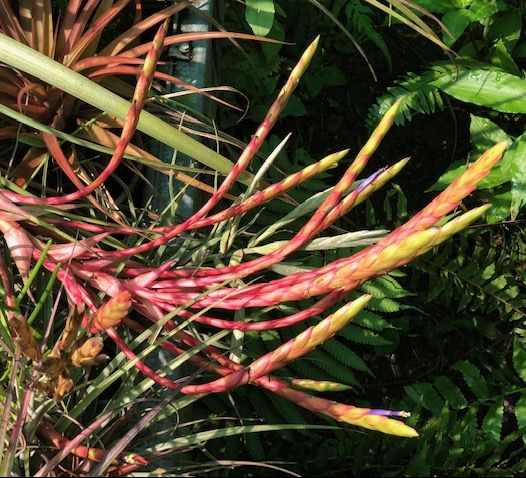
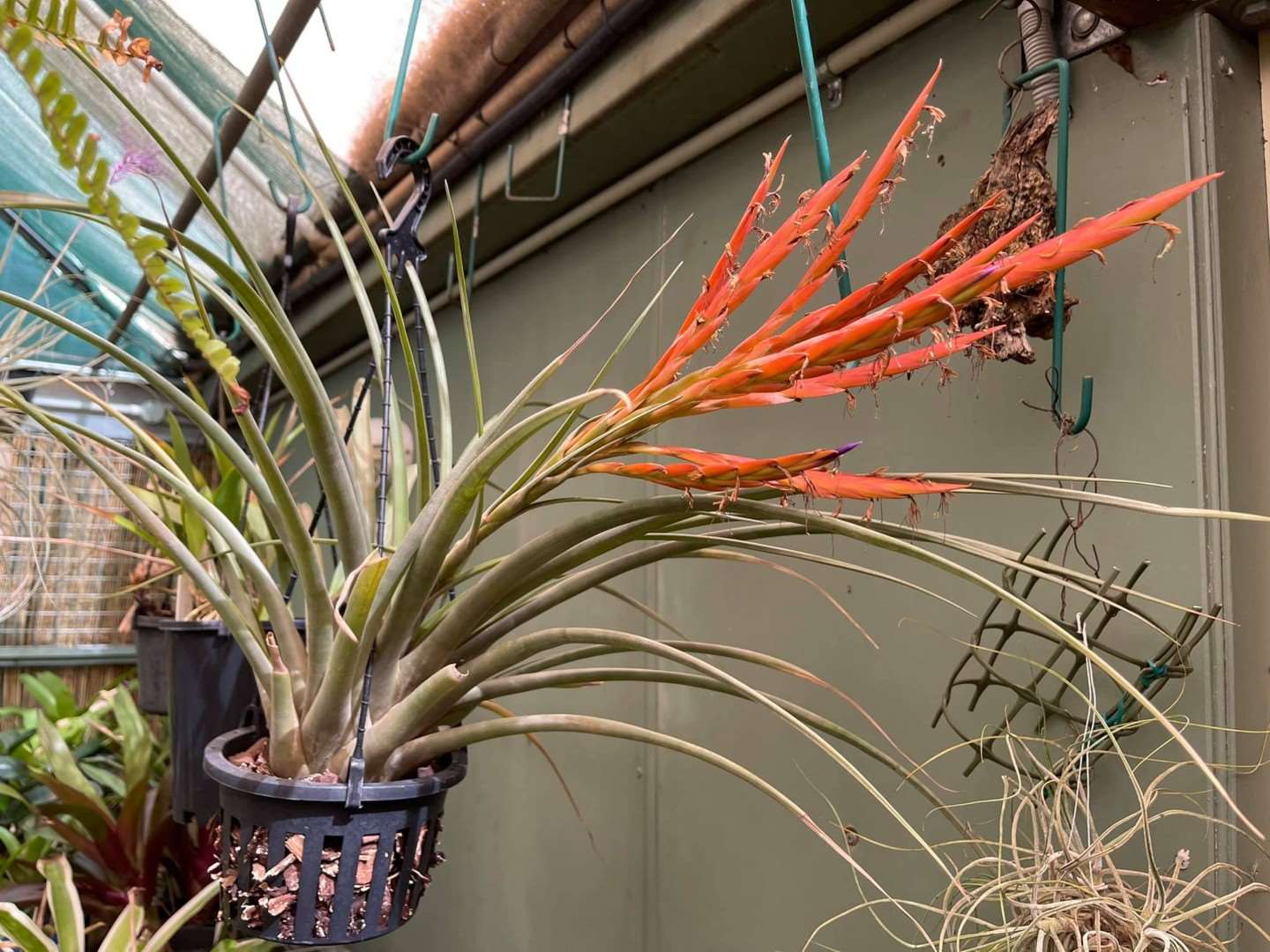

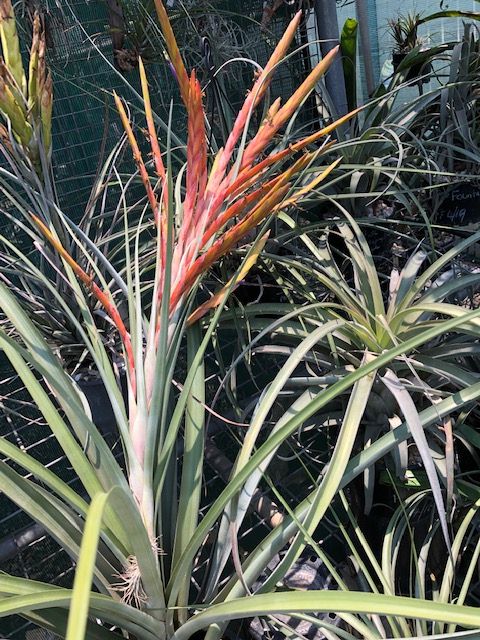
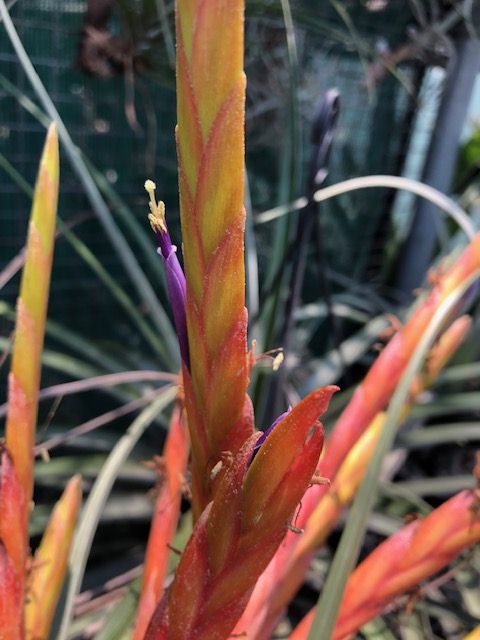

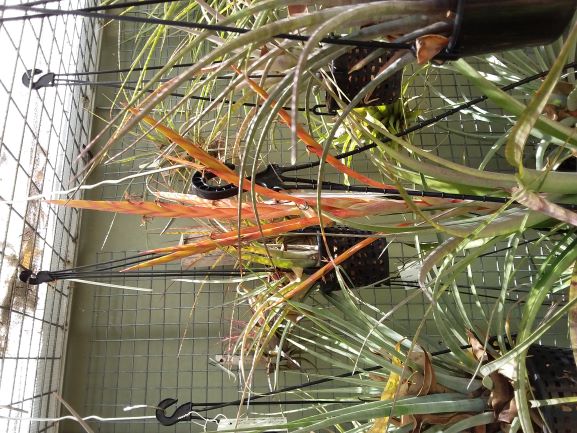
Tillandsia x bergiana H.Takizawa & P.Koide ,.J Brom Soc 50: 244-6. 2000
Hybrida naturalis e Tillandsia beutelspacheri Matuda et T. flabellata Baker, inter parentes media, inflorescentia ramosus cum anguste fasciculatus.
TYPE: Mexico. Chiapas: Tuxtla Guitierrez-Sumidero, El Mirador; 1100 m. Coll. May 1983, W Schuster & P Koide legit; flowered in cultivation July 2000, H. Takizawa s. n. (Holotype: SEL, Isotype: MEXU)
Plant stemless, saxicolous, flowering 70-90 cm tall.
Leaves many in a dense rosette, spreading to recurving, 50- 70 cm long, rather stiff.
Leaf sheaths elliptic, 15-18 cm x 7-8 cm, castaneous, finely lepidote.
Leaf blades narrowly triangular, attenuate, 40-50 mm wide, channeled, finely appressed lepidote above, densely appressed cinereous lepidote below.
Scape erect, 25-35 x 1 cm, nearly glabrous.
Scape bracts densely imbricate, erect to slightly spreading, foliaceous, nearly glabrous above, finely lepidote below, yellow-orange.
Inflorescence erect to arcuate, densely bipinnate, cylindrical, 40-50 cm long, 10-15 cm wide with 12-20 lateral branches.
Primary bracts elliptic, densely lepidote, yellow-orange, the lower with narrowly triangular and attenuate foliage blades that do not exceed the branches; the upper short acuminate.
Branches ca. 2-2.5 cm apart, ca. 10 mm pedicellate, spreading 10-30º from the axis at anthesis, 20-25 x 1.5 cm, distichously 10-15 flowered.
Floral bracts densely imbricate, elliptic, acute to acuminate, 35-40 mm long, lower half bicarinate, upper half carinate, thin glabrous, lepidote toward the apex, yellow-orange.
Flowers sessile, opening during the day.
Sepals narrowly elliptic, acute, the adaxial pair carinate and ca. 5 mm connate, ca. 20 mm long, glabrous, pale green.
Corolla tubular.
Petals linear, broadly acute. 50 mm long, violet.
Stamens 55-58 mm long, style 60 mm long, both are exserted.
Tillandsia x bergiana is presumed to be a natural hybrid of the Mexican T. beutelspacheri and T. flabellata. In the type area, T. beutelspacheri grew on cliffs and the red form of T. flabellata was found growing on nearby trees. Tillandsia socialis also grew on trees while T. ionantha v. vanhyningii occurred on the cliffs.
This hybrid represent intermediate characters of both parents. It has a well-branched showy yellow-orange inflorescence.
Etymology: The specific name honors Walter H. Berg who was one of the most prolific bromeliad collectors in recent years as well as a great friend. Wally made frequent collecting trips to almost all Latin American countries and discovered many new bromeliad species. Guzmania bergii H. Luther and Pitcairnia bergii H. Luther were named after him. He passed away at age 73 from complications of lung cancer on Monday, March 27, 2000. Wally spread his enthusiasm for bromeliads to many persons all over the world.